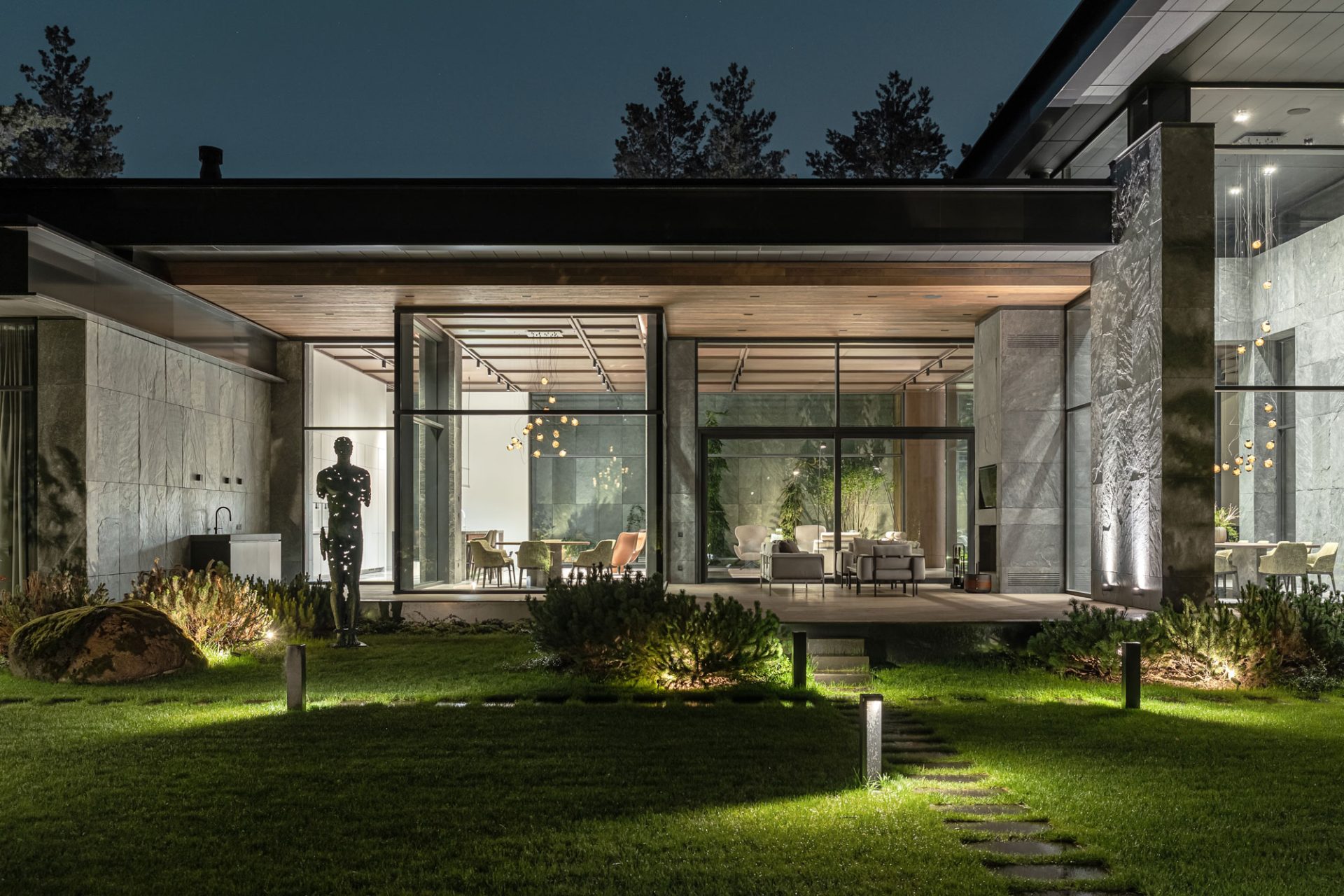Brief
The clients for this project are connoisseurs of nature and enjoy the fresh air as much as they love spending time together. Thus, in developing the architecture and interior concept for this future home, the Yodezeen team decided to find a way to erase the boundaries between nature, architecture, and the interior. To make this house truly exceptional, the studio team designed it as a place where the guests could breathe fresh air like in the forest.
Location:
Square meters:
Date:
Team:
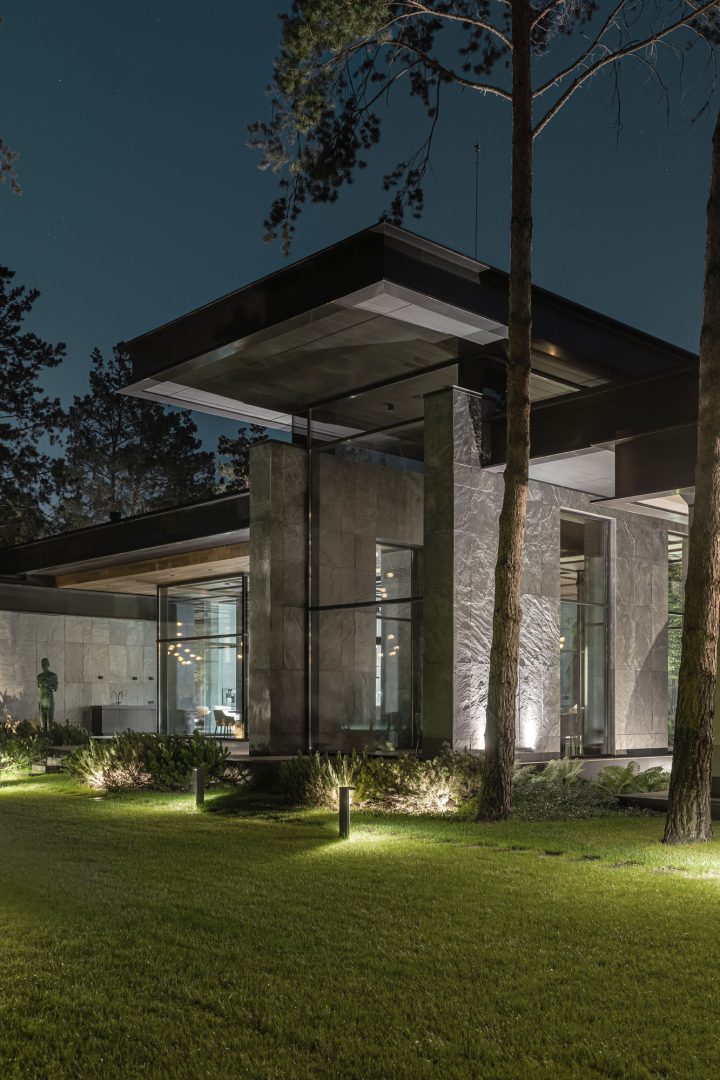
Challenge
Implementing this project, a spacious house in a coniferous forest lasted about two and a half years. The client wanted the building to be a single story for added privacy and designed in a modern, minimalist style. The site and the surrounding area dictated the future concept of the house. And as the territory has an almost flat relief, the team of architects focused exclusively on perfecting the design concept of the future home. This project is one of YODEZEEN’s first architectural concepts, completed from start to finish as envisioned.
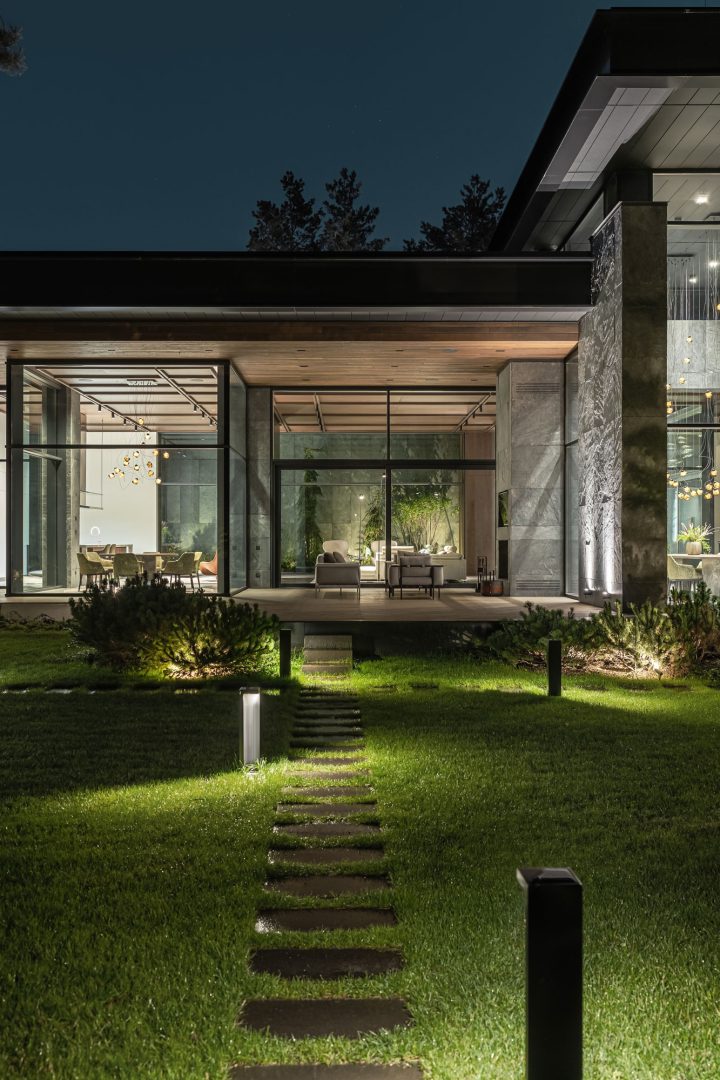
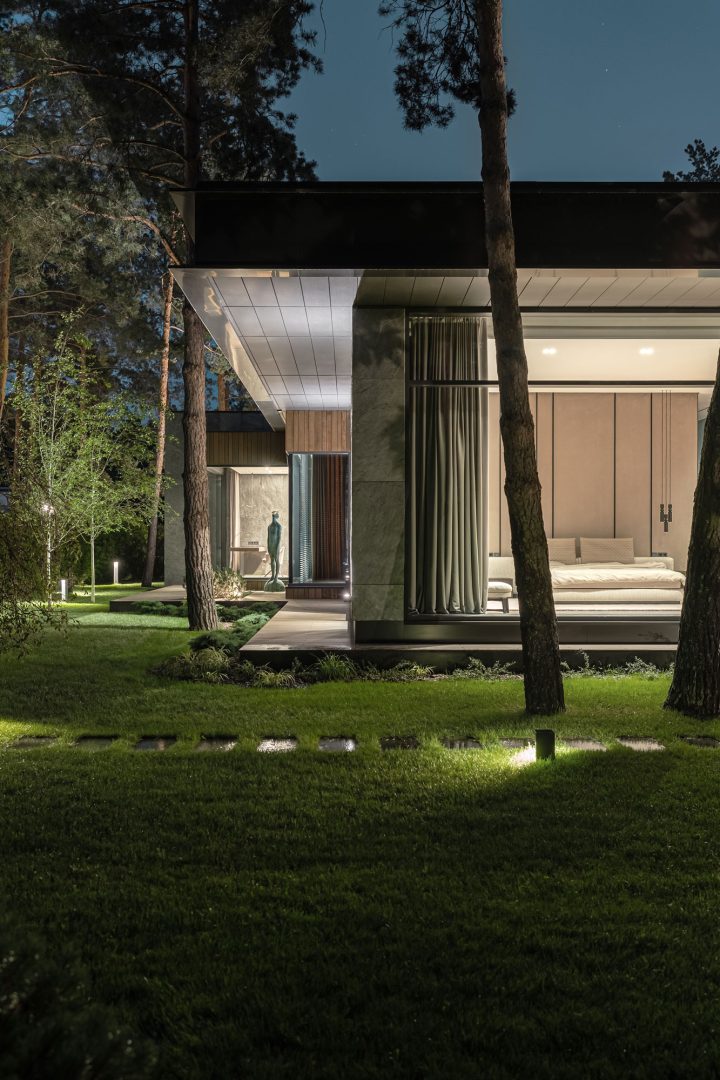
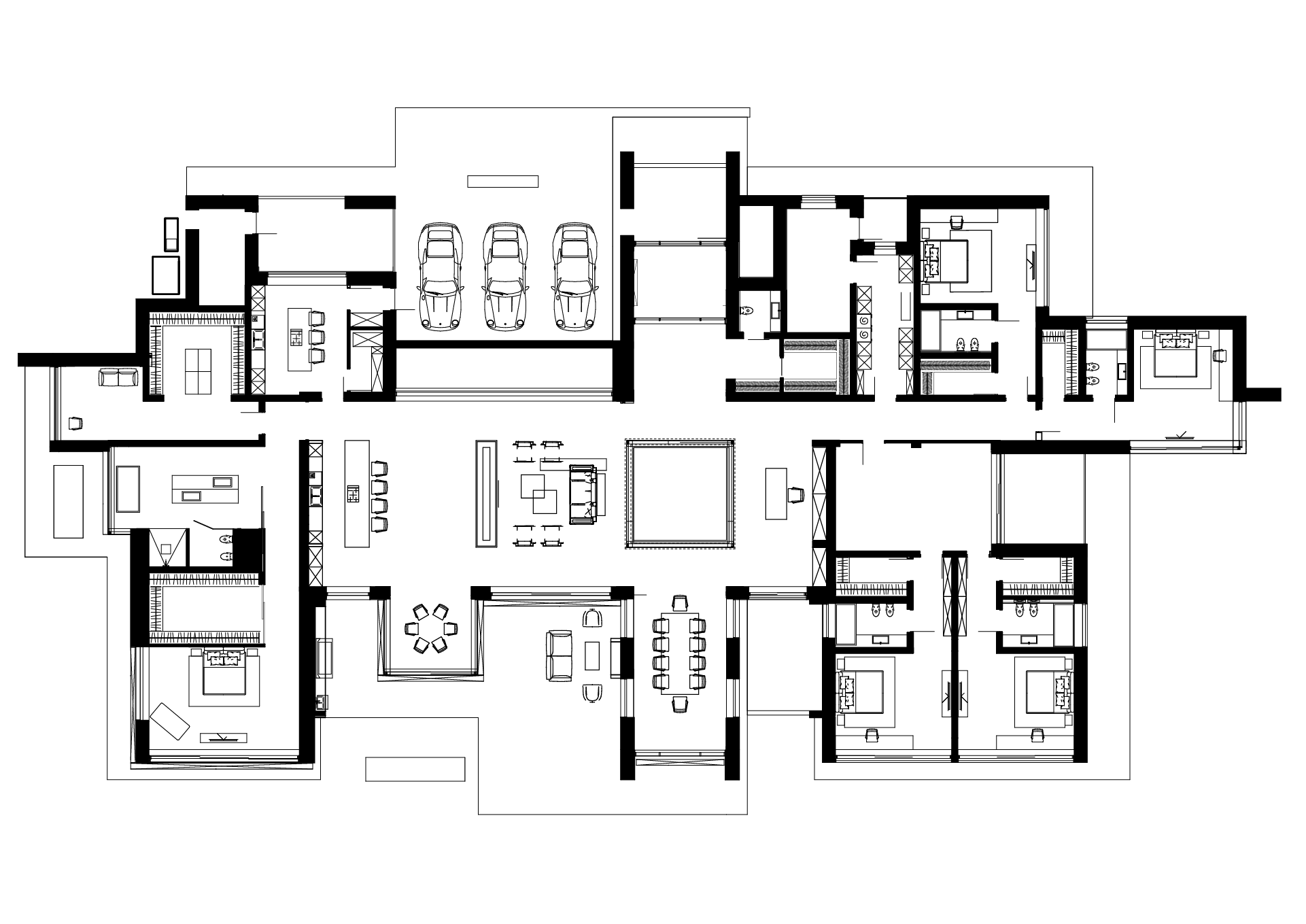
Layout
The main idea of the team was to make a house of such a shape that it would be organically distributed over the territory and dissolved in the forest area. Therefore, as an architectural and volumetric solution, we chose the composition of a three-level pyramid for the house. In general, the central parts: the entrance, the hall, and the dining room, are all the highest. They serve as a kind of accent or “tops.” The living room, the kitchen, and the fireplace area are on the second level, where the ceiling height is 4.4 m. The master block and guest bedrooms are the most secluded rooms on the lowest level.
The team made the house’s structure from a monolithic frame, thus connecting each zone. It creates a certain feeling of “openness,” which is due to the shape and distribution of zones. The private zones look into the forest, where no one will disturb the leisure of the residents and the guests, while the technical zones face the street and the road.
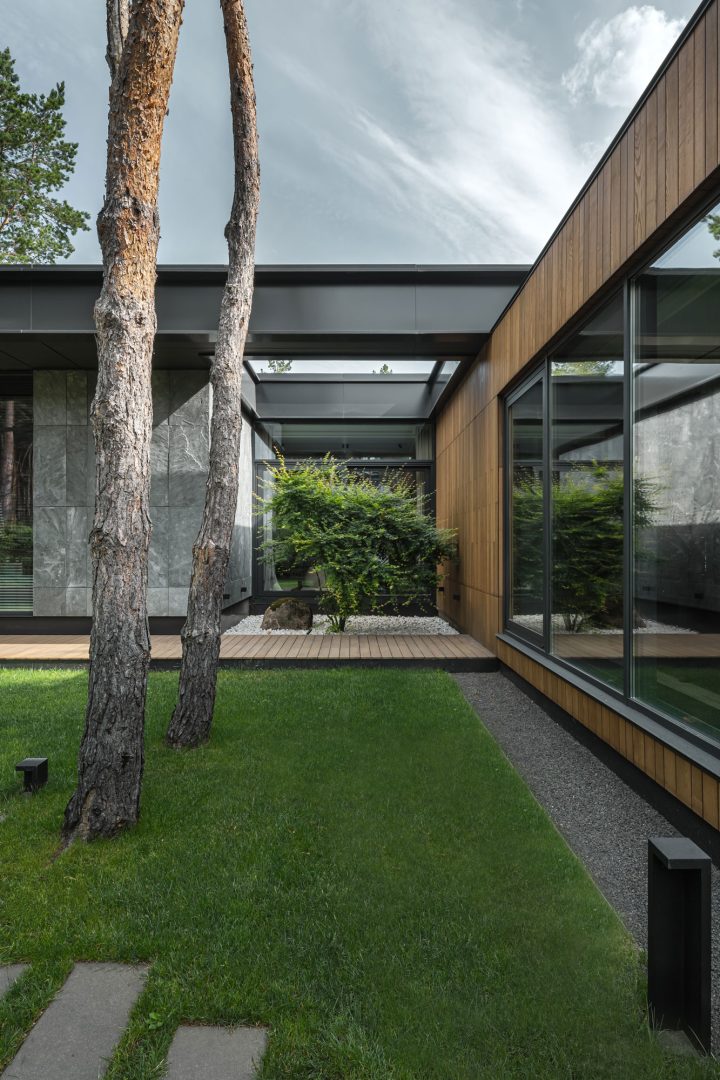
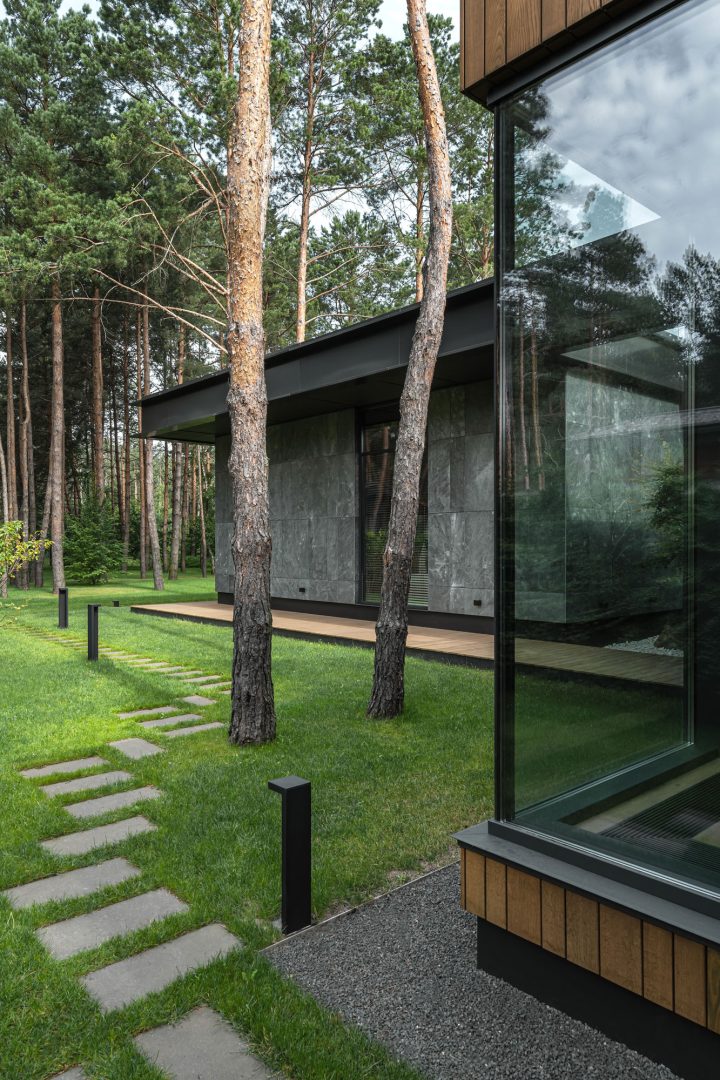
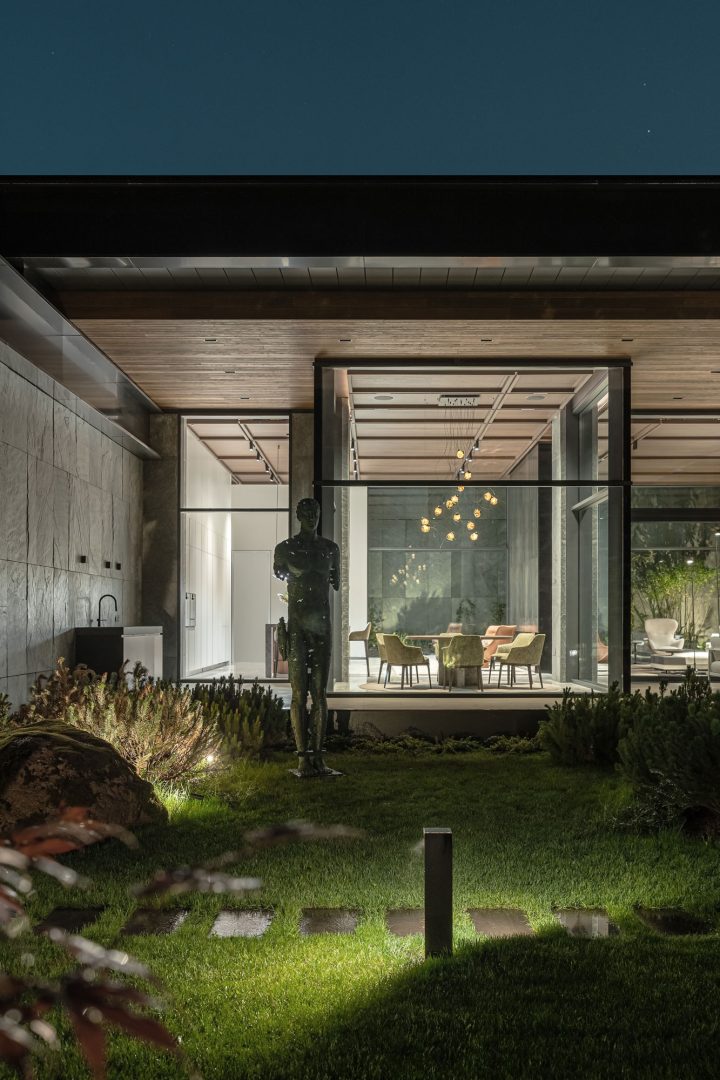
Concept
The first thing that a person would appreciate, even before the home’s design and architectural appearance, is the impeccability of nature. To pay tribute to its role in this project, the YODEZEEN team decided not to build walls and create a green oasis right in the heart of the house. This is the main feature, which the clients instantly fell in love with, – the presence of so-called green wells. Along with the architectural elements, the green wells bring together the landscape and the house, showcasing how the designers ingeniously created a feeling of nature inside the home.
Inspired by the German trend of using live compositions indoors, we placed three such zones around the house. For example, in the main cube, the studio chose a coniferous composition with a rather complicated piece of technology to conserve its plants year-round. Also, with many tall pines growing on the site to provide additional shade, the architects installed an air circulation system inside the cube. They also insulated the ground so that snow would not accumulate during the winter.
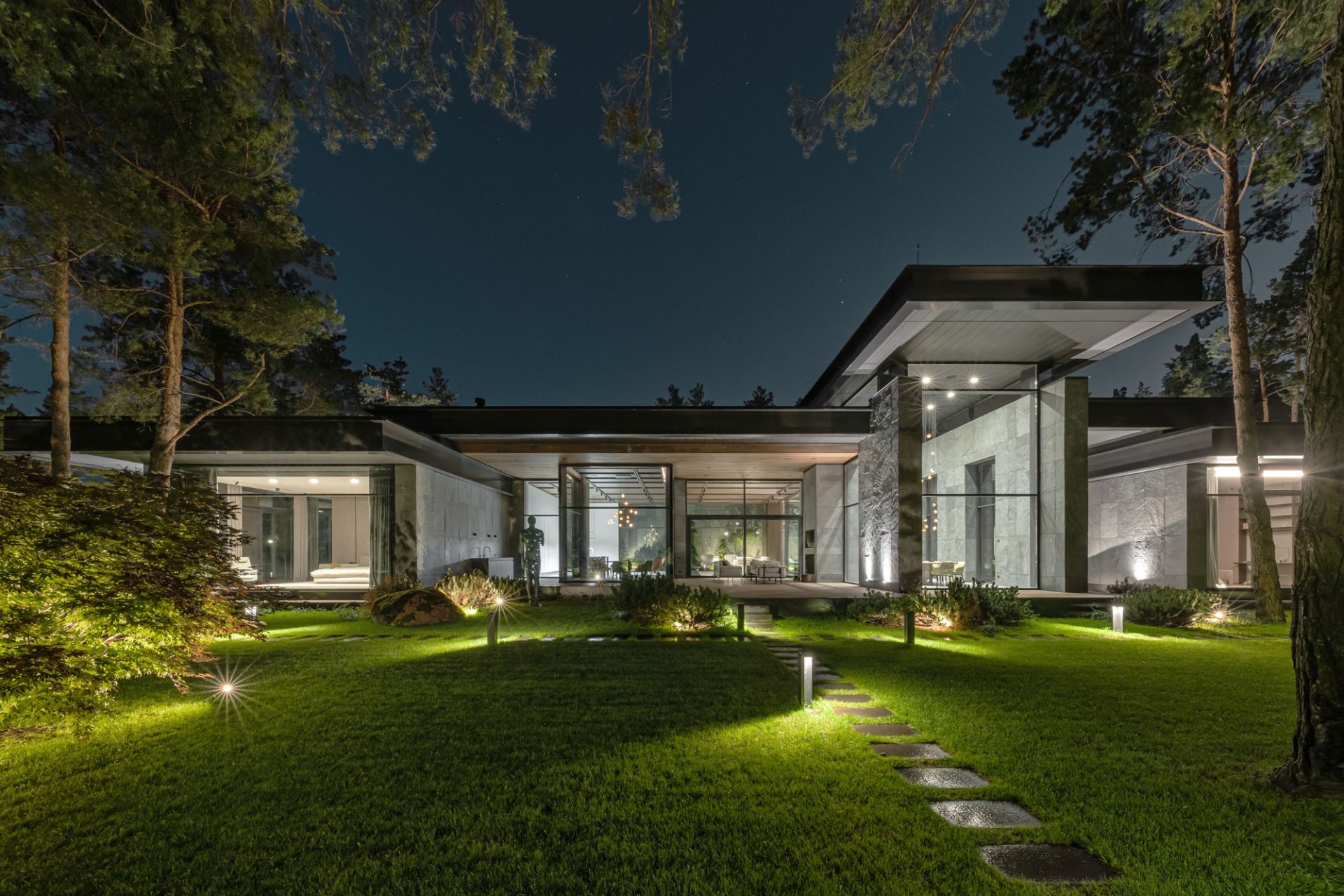
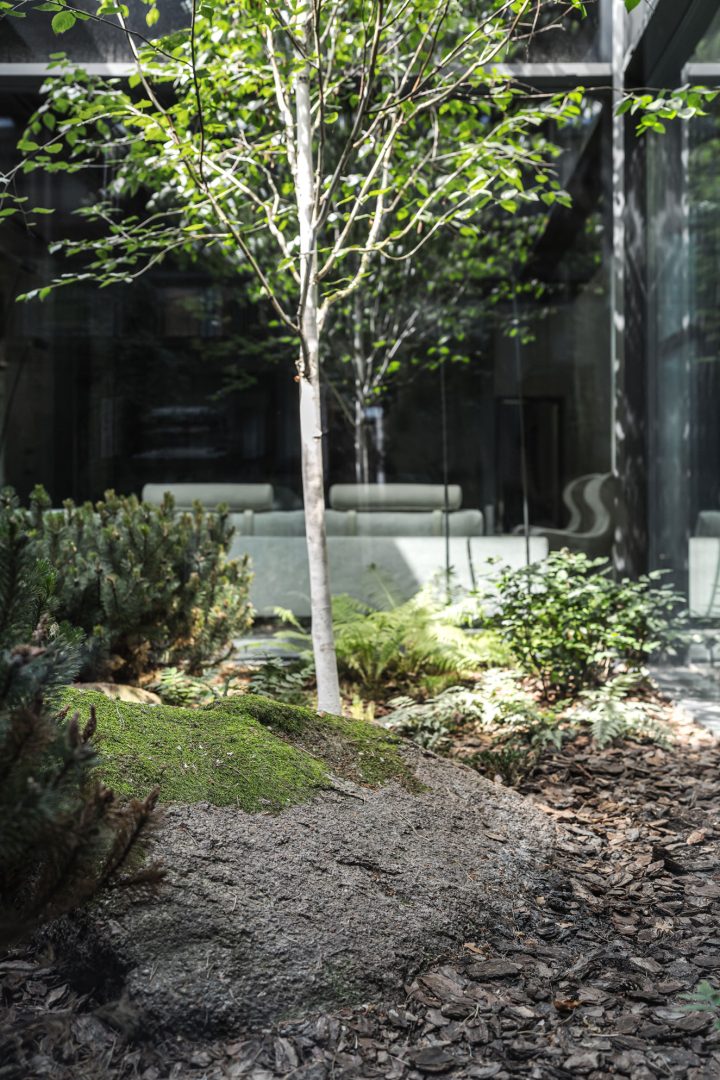
Implementation
The choice of form and design concept depended directly on how the team would distribute the internal functionality of the premises. The living room, which has a lounge area and a fireplace, was designed to be the most spectacular room filled with fresh air. The same applies to the house entrance, where the goal was to impress anyone crossing the threshold. The designers planted all the high zones in the center because it was necessary to consider the neighbors’ presence. The wings of the bedrooms appear to cut off the structure from other areas, creating an internal microclimate.
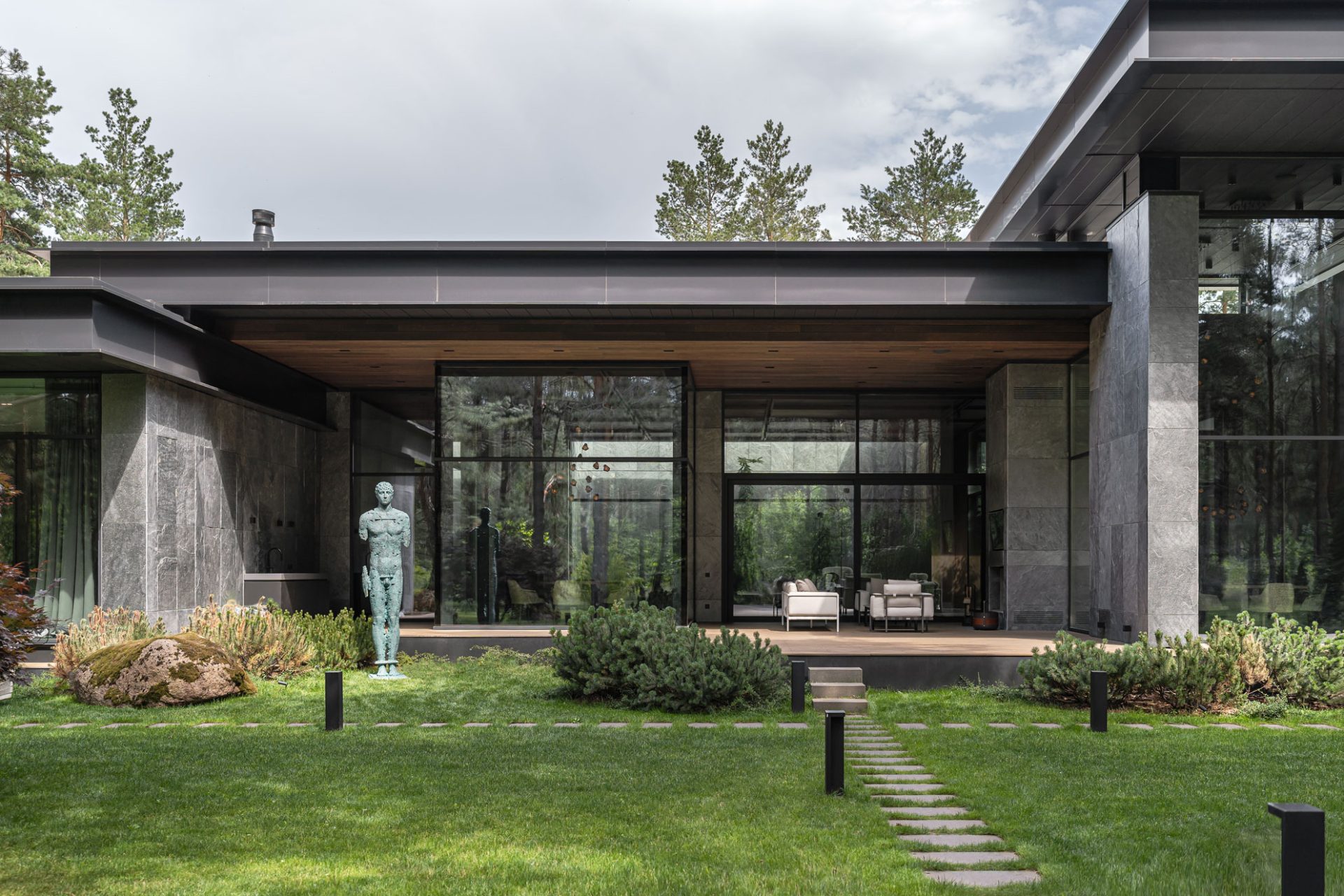
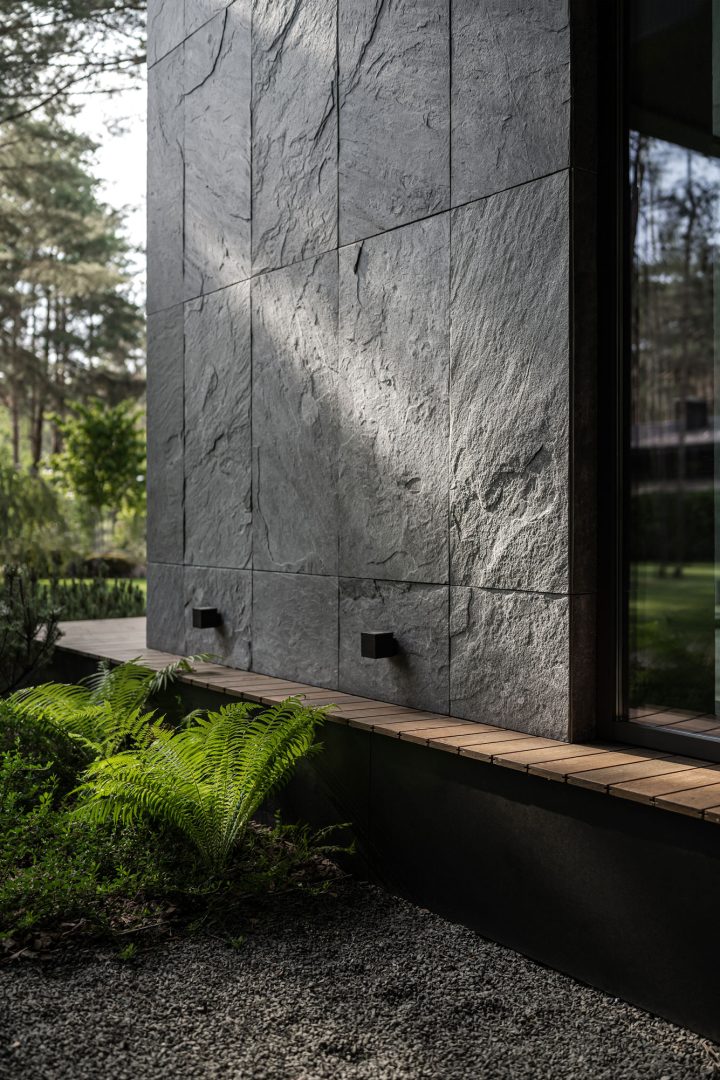
Materials
With every component that this house consists of, the architects echoed the idea of merging with nature. The choice of facade materials includes thermo ash, natural stone, glass, and metal. The warm wood in the house recounts the shades of the forest. And the light stone, which was left grooved and unprocessed, as it is in nature, also repeats the original palette.
The designers didn’t just rely on natural materials to create the sense that the house was involved in the surrounding coniferous forest. They also used cladding materials that are as close as possible to the shades of the environment. For example, they used a warm palette of wood, light gray natural stone, and large glazing surfaces for the maximum perception of the forest area both from the interior and from the outside. All in all, the customers can be sure to enjoy the atmosphere outside by sitting on a large wooden terrace in the house’s courtyard.
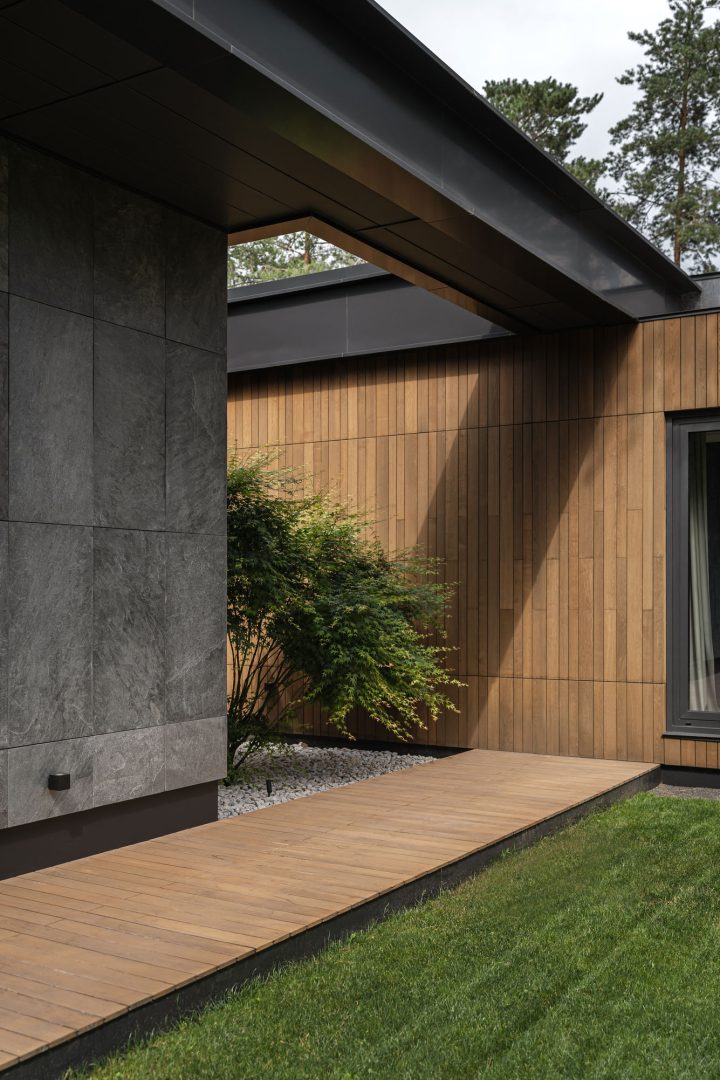
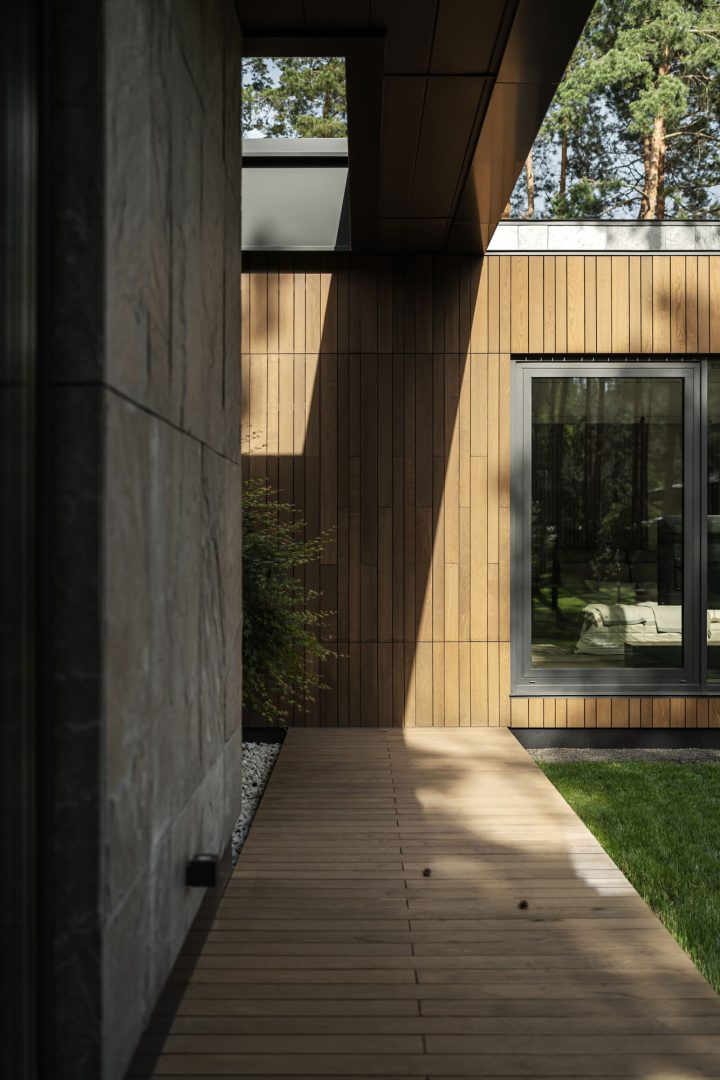
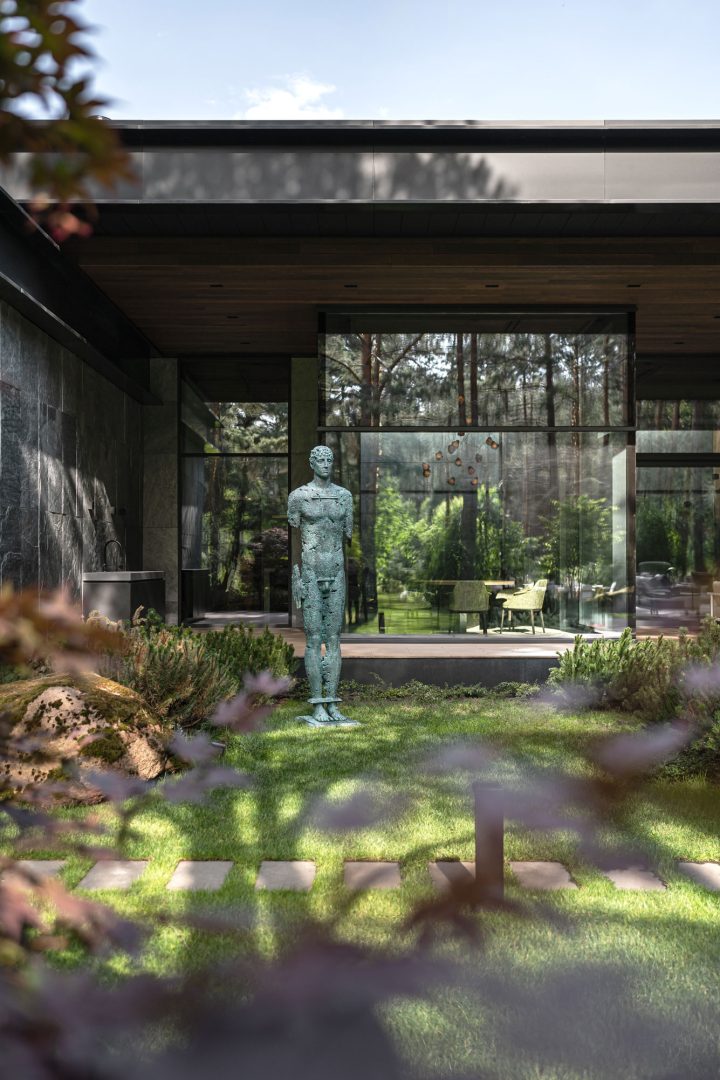
Art
In our projects, modern art is a part of the architecture, its continuation, and an irreplaceable puzzle in the overall composition. A sculpture by Ukrainian artist Yehor Zigura adorns the facade of the house in the backyard, while Rain by Nazar Bilyk is visible from the panoramic windows of the master’s block.
